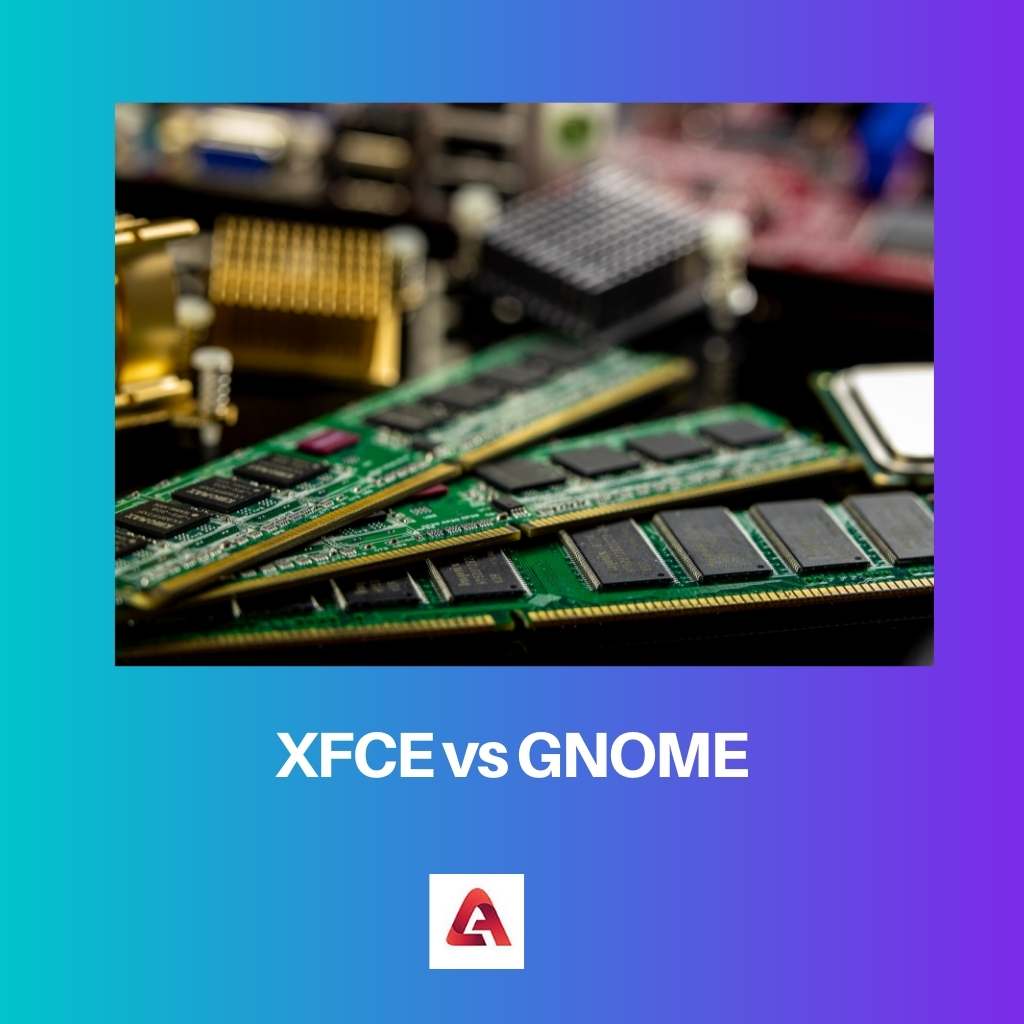XFCE and GNOME are tools that provide desktop environments for Unix operating systems. They have several similarities between them. For example, both of them support all distributions from Linux, including Ubuntu, Debian, Fedora and much more.
The main goal of the tools is to increase productivity and enhance user experience. However, they have quite a few differences between them as well.
Key Takeaways
- Xfce is faster and lightweight compared to Gnome.
- Gnome offers better integration with GNOME apps and extensions.
- Xfce has a traditional desktop interface, while Gnome provides a modern, streamlined interface.
XFCE vs GNOME
XFCE is a open-source desktop environments for Unix-like operating systems known for its lightweight and high performance, ideal for older or low-resource machines. GNOME, another open-source desktop environments for Unix-like operating systems, offers a more user-friendly and visually appealing interface, requiring more system resources.

XFCE is able to facilitate high performance for all its tasks. This is because of the low CPU and memory consumption. Due to its lightweight functionality, users experience a shorter loading time.
This also helps them carry out more amount of work in a shorter duration, thus increasing their overall productivity.
Meanwhile, GNOME does not facilitate performance as efficiently as the former. This is because of its high CPU usage and memory consumption.
The desktop environment has a heavy-weight functionality, meaning it has a longer loading time than the former. Therefore, a user may not be able to show as much productivity on GNOME.
Comparison Table
| Parameters of Comparison | XFCE | GNOME |
|---|---|---|
| Nature | It is lightweight. | It is heavyweight. |
| CPU Usage | It only functions with 1% of CPU usage. | It functions with 10% of CPU usage. |
| Memory | It uses around 500 MB of RAM for average tasks. | It uses around 800 MB of RAM for average tasks. |
| Approach | It uses the modular approach which only loads parts of the software that is required at a particular time. | It uses a default approach that loads the entire software onto the memory even when not needed. |
| Configuration | The configuration can be customized according to user preference. | The configuration is default and cannot be customized. |
| Loading Time | It has a shorter loading time. | It has a longer loading time. |
| Performance | It shows high performance. | It is not as efficient in terms of performance. |
What is XFCE?
XFCE is a desktop environment designed for Linux operating systems. It was developed by Free Software Community and was released in 1996.
The software provided by it is free and open source. Its functionality is lightweight, which enables high performance and productivity.
The desktop environment functions on only 1% CPU usage, and while doing so, it only uses 500 MB of RAM. It uses a modular approach when users are carrying out various projects on the device.
This means that only required parts of the software are downloaded onto the memory for use. Moreover, XFCE provides an incredibly user-friendly experience. It allows users to customize the configuration of the software according to their preferences.
On purchase, XFCE comes with packaged parts that are separate. They need to be put together so as to perform all the functions of a desktop environment.
The user can choose subsets of all the required parts according to preference. XFCEs entire package has its roots in the GTK toolkit. It uses the windows manager to perform various tasks efficiently.
A stand-out feature of XFCE is that it supports composting. However, one of its limitations is that there are no animations present in the desktop environment. Regardless, it is way better than GNOME in terms of functionality, design, and performance.
What is GNOME?
GNOME is another desktop environment for Linux operating systems. It was developed by The GNOME Project and was released in the year 1999.
Like XFCE, the software that it provides is free and open source. However, the functionality of the desktop is relatively heavyweight. This means that it facilitates lower performance and productivity.
The desktop environment functions on more than 10% of CPU usage, and while doing so, it uses around 800 MB of RAM. It uses a default approach for carrying out tasks.
This means that the entire software is loaded onto the memory for projects carried out by the user instead of just parts of the software. Moreover, the desktop only has a default configuration that is not at all customizable.
Every user that has GNOME on their device must adhere to some Human Interface Guidelines. These include a regulation that asks users to share only a single style of Graphic User Interface.
However, the widgets can be changed as per preference. This allows users to create consistent and high-quality graphic programs.
GNOME offers several additional features that can prove to be quite useful for customers. However, GNOME lacks high performance and functionality compared to XFCE, which gets in the way of user productivity.
Moreover, it has a comparatively longer loading time.
Main Differences Between XFCE vs GNOME
- XFCE is lightweight, whereas GNOME is heavyweight.
- XFCE only functions with 1% of CPU usage, whereas GNOME functions with 10% of CPU usage.
- XFCE uses around 500 MB of RAM for average tasks, whereas GNOME uses around 800 MB of RAM for average tasks.
- XFCE uses the modular approach, which only loads parts of the software that is required at a particular time, whereas GNOME uses the default approach, which loads the entire software onto the memory even when not needed.
- XFCE configuration can be customized according to user preference, whereas GNOME configuration is default and cannot be customized.
- XFCE has a shorter loading time, whereas GNOME has a longer loading time.
- XFCE shows high performance, whereas GNOME is not as efficient in terms of performance.





